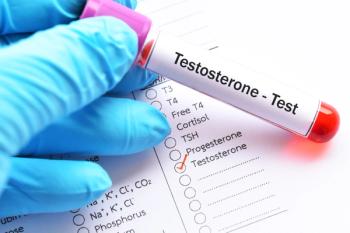
Etonogestrel Contraceptive Implants Reduce Pain Crises in Women With Sickle Cell Disease
Etonogestrel-releasing contraceptive implants in women with sickle cell disease significantly reduced pain intensity and frequency of pain crises over 12 months, with no adverse changes in metabolic or liver function markers.
A
In addition to the physical and emotional burden of VOCs,
Investigators of the new study aimed to assess the clinical safety and impact of ENG implants on women with SCD, focusing on pain and metabolic parameters. 1
The research included 23 women with SCD, aged 18 to 40 years, who had experienced pain crises in the 3 months preceding the study. These participants were followed over 12 months after receiving an ENG implant. Blood samples were collected before and at 6 and 12 months post implantation to monitor laboratory parameters, including blood count, liver and lipid profiles, and lactate dehydrogenase levels. Clinical variables such as bleeding patterns, weight, body mass index, blood pressure, pain intensity, and pain crisis frequency were evaluated every 3 months.
After receiving ENG implants and completing 12 months of follow-up, 23 women with SCD were included in the analysis. The mean (SD) age of participants was 30.5 (6.7) years. Most participants were Black (69.6%) and single (65.2%). Nearly 40% had a family income at or below minimum wage. Regarding gynecological history, the mean (SD) age of first sexual intercourse was 19.4 (2.8) years, and 60% of participants had not used any contraceptive methods prior to receiving the ENG implant.
Results revealed significant reductions in both pain intensity and frequency of pain crises. On a scale of 0 to 10, participants reported a median pain intensity score of 8 at the start, which dropped to 4 after a year (P = .005). The frequency of pain crises also decreased from an average of 6 days per month to 0 days per month by the end of the study (P = .000).
No significant changes in laboratory variables, including liver function markers and lipid profiles, were observed during the 12 months of follow-up, suggesting the safety of ENG implants in this patient population. These data align with research that previously found no major metabolic disturbances related to ENG implants in women without SCD.
Investigators highlighted the potential role of ENG implants in managing SCD-related pain crises. The reduction in pain crises may be due to the stabilizing effect of progesterone on erythrocyte membranes, which could prevent VOCs, the primary cause of hospitalization in patients with SCD. This hypothesis is supported by earlier studies that have shown progestogen-only methods may help reduce the occurrence of these crises.
However, one challenge highlighted by the study was the occurrence of unfavorable bleeding patterns, which affected over 35% of participants by the end of the first year. While this was a leading cause of ENG implant discontinuation, hemoglobin levels remained stable, and only 1 participant discontinued the implant due to irregular bleeding.
"Despite being a secondary objective of the present study, reduction in intensity and frequency of pain crises has biological plausibility and may be a non-contraceptive benefit of the implant among this population," the authors wrote. "Broadening knowledge about the related effects of using an effective method such as ENG implantation provides opportunities to discuss the benefits and suitability of this method for women with SCD, contributing to equitable and universal health care."
Several limitations were acknowledged, including the small sample size and potential biases from the study’s observational, open-label design. Additionally, the high use of hydroxyurea among women with SCD in Brazil, where the study was conducted, reduced the available pool of participants. The study’s location in Bahia, a region with the highest incidence of SCD in Brazil, also contributed to these limitations, as hydroxyurea has been the primary treatment option for SCD since 2011.
Nevertheless, the use of ENG contraceptive implants in women with SCD was associated with a significant reduction in pain intensity and frequency of pain crises over 12 months, with no adverse changes in metabolic or liver function markers. Despite some challenges with bleeding patterns, the ENG implant appears to be a safe and effective option for managing pain in women with SCD, improving their quality of life, according to the study.
References
1. Brito MB, Boas AQV, Silva AMN, et al. Impact of etonogestrel-releasing contraceptive implant use in cisgender women with sickle cell disease. J Natl Med Assoc. Published online October 19, 2024. doi:10.1016/j.jnma.2024.09.003
2. McNulty R. Sickle cell disease with recurrent vaso-occlusive crises carries a substantial economic burden, study finds. AJMC®. November 6, 2022. Accessed October 23, 2024.
Newsletter
Stay ahead of policy, cost, and value—subscribe to AJMC for expert insights at the intersection of clinical care and health economics.















































